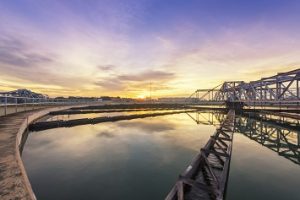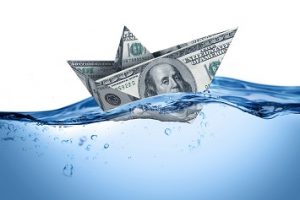This is an important time for states, municipalities, Indian tribes, and private organizations seeking funding to advance project-ready drinking water and wastewater infrastructure improvement projects.

The EPA has announced that these and other eligible entities may now submit letters of interest (LOI) to receive assistance under the Water Infrastructure Finance and Innovation Act (WIFIA) that was signed by President Donald Trump on March 23, 2018. Prospective borrowers may submit LOIs until July 6, 2018. An EPA selection committee will score the LOIs based on multiple criteria, which include consideration of geographic and project diversity. The top scorers will be invited to submit a full application for WIFIA assistance.
The benefit for those who move on to the application stage and then get selected for assistance are both direct loans from the EPA and, perhaps more importantly, loan guarantees the Agency provides for approved projects.
The EPA has assembled extensive information about the WIFIA and its various implementation stages—LOI process, application process, and project selection process—at https://www.epa.gov/wifia. Here we describe the major elements of this important federal funding program.
$11 Billion Financing
The WIFIA provides the EPA with at least $55 million in budget authority to cover the subsidy required to provide a much larger amount of credit assistance. The Agency estimates that this budget authority may provide approximately $5.5 billion in credit assistance and finance approximately $11 billion in water infrastructure investment. Projects that receive WIFIA funding are also eligible to receive federal Clean Water State Revolving Funds (SRFs) and Drinking Water SRFs. The WIFIA may provide up to 49 percent of the financing while the state SRFs could provide additional financing for up to the remaining 51 percent of eligible project costs. A single WIFIA project can include both drinking water and wastewater infrastructure.

Customized Terms
To meet its mission, the WIFIA program can structure WIFIA credit instruments to provide low-cost, long-term, supplemental credit assistance under customized terms to qualified projects. To access these benefits, credit assistance must comply with all statutory terms and conditions and programmatic credit policies. The statute authorizes the WIFIA program to provide both secured loans and loan guarantees. A secured loan is disbursed by and repaid to the federal government. A loan guarantee is a pledge by the administrator to pay all or part of the principal of and accrued interest on a loan or other debt obligation issued by a borrower and funded by a lender.
Among the program’s other provisions:
- The EPA must set aside 15 percent of its budget authority for small communities, defined as systems that serve a population of less than 25,000.
- For a project to be eligible for WIFIA credit assistance, the project’s eligible costs must be reasonably anticipated to be at least $20 million. Small community projects must be reasonably anticipated to total at least $5 million.
- As noted, the criteria for selecting those who are invited to submit an application are extensive. For example, the project must satisfy at least one of the following criteria:
- Meet the definition of a project eligible for funding as established by Clean Water Act (CWA) Section 603(c).
- Meet the definition of a project eligible for funding as established by Safe Drinking Water Act (SDWA) Section 1452(a)(2).
- Provide for repair, rehabilitation, or replacement of a treatment works, community water system, or aging water distribution or waste collection facility (including a facility that serves a population or community of an Indian reservation).
- Provide for desalination of brackish water or seawater chloride control, a managed aquifer recharge project, a water recycling project, or a project to provide alternative water supplies to reduce aquifer depletion.
- Provide for the acquisition of real property or an interest in real property to support the above projects.
- Prevent, reduce, or mitigate the effects of drought, including projects that enhance the resilience of drought-stricken watersheds.
- Be a combination of eligible CWA and SDWA projects.
- Be a combination of eligible projects secured by a common security pledge for which an eligible entity, or a combination of eligible entities, submits a single application.
Borrower Must Be Creditworthy
The LOI requirements also address eligible costs (e.g., planning, construction, acquisition of real property, and payment of interest); creditworthiness of borrower; and conditions that must be met by nongovernment borrowers (e.g., the applicant must have developed an operations and maintenance plan that identifies adequate revenues to operate, maintain, and repair the project during its useful life).
Beginning April 23, 2018, the EPA will be holding four webinars on both the WIFIA and submission of LOIs, including one session each for small communities and Indian tribes. Go to https://www.epa.gov/wifia for dates and times.
